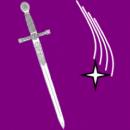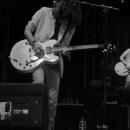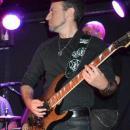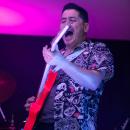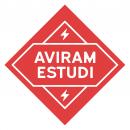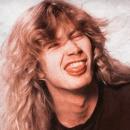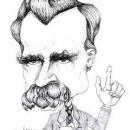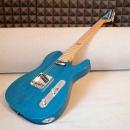Segun he leido Mike Oldfield toca con guitarras que poseen pastillas Midi, estas toman las notas producidas por las vibraciones de la cuerdas y van a un equipo que este posee donde escoge a que instrumento suena la guitarra, por eso ese efecto.

Efectivamente, es una señal Midi que va a un Synth.

#2 Ummm si, ha usado guitarras midi alguna vez, pero creo que la que usa aqui es normal, es una PRS custom 24 (oldfield fue de los primeros en apuntarse a la moda de las PRS). También se ve el mismo efecto hacia el minuto 4 con una stratocaster. En la entrada de oldfield de wikipedia salen estas guitarras, ya que son de las que mas ha usado en los ultimos años:
A 1963 (also quoted as 1961 and 1962) salmon pink (fiesta red) Fender Stratocaster serial no.L08044
A 1989 amber PRS Artist Custom 24 – used by Oldfield from the late 1980s to the present day.
Vamos, yo creo que son guitarras normales, sin pastillas midi.

A cualquier guitarra se le coloca una pastilla en el puente para la lanzar la señal Midi.

Ya te digo que es lo que me parece a mi, no te lo puedo asegurar porque no soy aficionado al Sr. Oldfield. Si pasa por aquí alguien que lo conozca mejor, pues que lo aclare. Esto es lo que dicen en la web sobre sus guitarras y amplis:
Electric guitars - Mike was still using the guitars he used for Ommadawn quite a lot, but at some point also bought a Gibson L6S. Mike's main reason for choosing the guitar was its neck, because of both the feel and the fact that the intonation was accurate right the way up to the 24th fret. Mike can be heard making use of all 24 frets in various parts of Incantations, perhaps most notably on the solo in the middle of Part 3.
At the time, Mike was using a complex chain of equipment in order to get his guitar sound. From the guitar, he plugged into a treble booster. Brian May, of Queen fame, explained once that because these devices remove a lot of low end from the sound, it helps the sound to distort more smoothly. They also add extra gain (i.e. they amplify the signal). Mike plugged the output from the treble booster into a small battery powered amplifier made by Vox, which Mike had set up to distort the sound a bit. From there, it went into the microphone amplifier section of a Teac tape recorder, which he overloaded to get some more distortion, and then into a graphic equaliser with the mid-range frequencies boosted. The guitar signal then went back into another channel of the Teac tape machine, which Mike said helped to bring the guitar down to the right level. The output of that was then plugged into the mixing console. From there, it went through a noise gate (a device that reduces the level of a signal, or cuts the signal completely, when the level of the input signal falls below a set threshold) and another graphic equaliser. It was this second graphic equaliser that Mike used if he wanted to change the sound at all. In addition, Mike had a limiter inserted, to stop any unwanted signal peaks.
Mike also had a Fender Twin Reverb amplifier in the studio, to which he sometimes fed the guitar signal from the mixing desk - he'd then record the signal with a microphone. Mike felt (and quite rightly if you ask me...) that doing this added warmth to the sound, helping it to sound more 'real' and less electronic.

También es posible que tenga la señal super-comprimida y haga el efecto flutter con el tremolo todo el tiempo.

En el minuto 3:20 se puede apreciar una pastilla tipo roland GK3 detras de la pastilla del puente. Podria ser eso. Saludos

#10 Es verdad, no me había fijado. Pues sí, puede ser. No obstante, ten en cuenta que este concierto es de 1999. No sé si ese producto en concreto existía, pero parece claro que usa una pastilla extra (midi seguramente, o del tipo que comentas).


